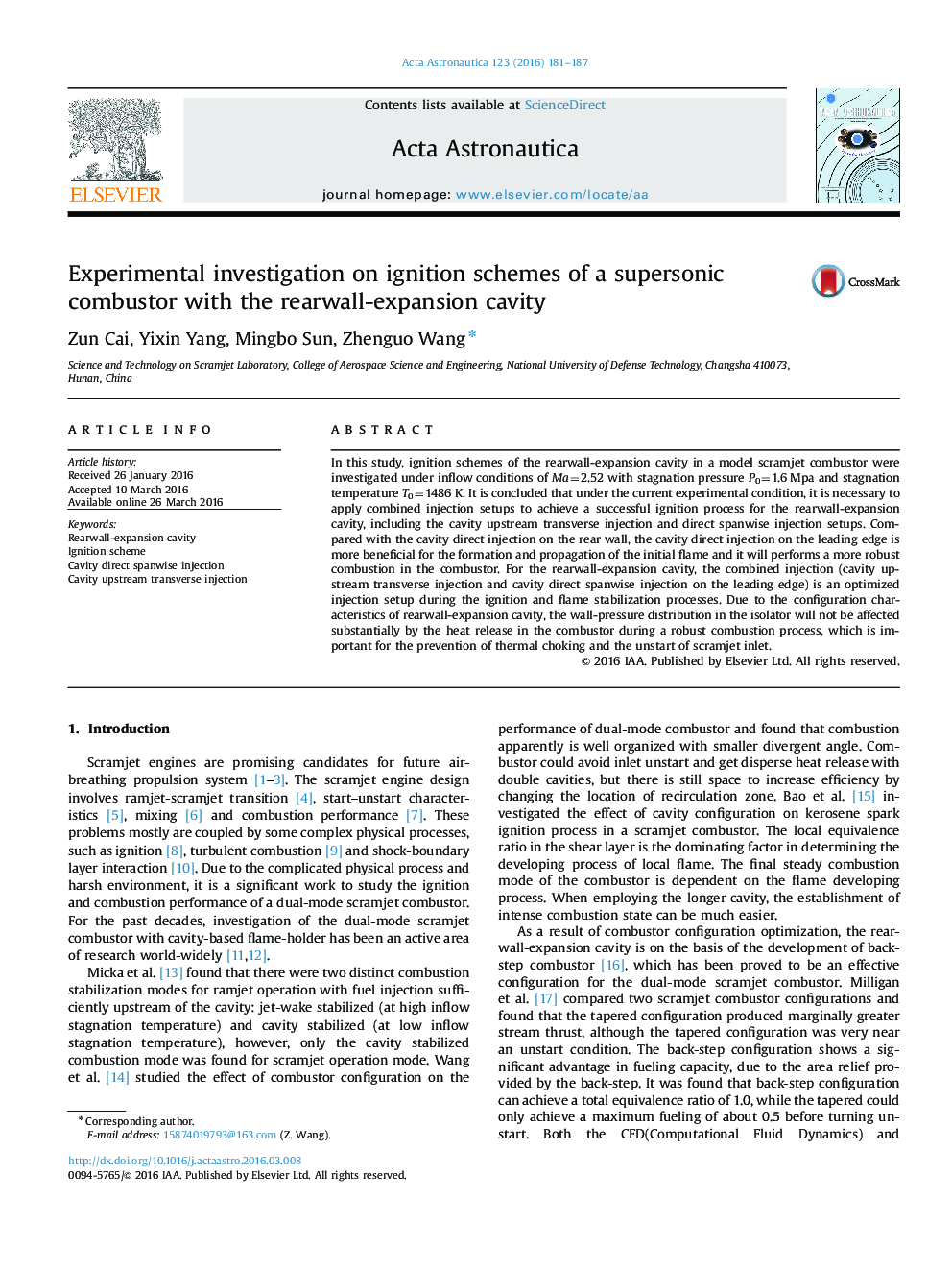| Article ID | Journal | Published Year | Pages | File Type |
|---|---|---|---|---|
| 1714092 | Acta Astronautica | 2016 | 7 Pages |
In this study, ignition schemes of the rearwall-expansion cavity in a model scramjet combustor were investigated under inflow conditions of Ma=2.52 with stagnation pressure P0=1.6 Mpa and stagnation temperature T0=1486 K. It is concluded that under the current experimental condition, it is necessary to apply combined injection setups to achieve a successful ignition process for the rearwall-expansion cavity, including the cavity upstream transverse injection and direct spanwise injection setups. Compared with the cavity direct injection on the rear wall, the cavity direct injection on the leading edge is more beneficial for the formation and propagation of the initial flame and it will performs a more robust combustion in the combustor. For the rearwall-expansion cavity, the combined injection (cavity upstream transverse injection and cavity direct spanwise injection on the leading edge) is an optimized injection setup during the ignition and flame stabilization processes. Due to the configuration characteristics of rearwall-expansion cavity, the wall-pressure distribution in the isolator will not be affected substantially by the heat release in the combustor during a robust combustion process, which is important for the prevention of thermal choking and the unstart of scramjet inlet.
